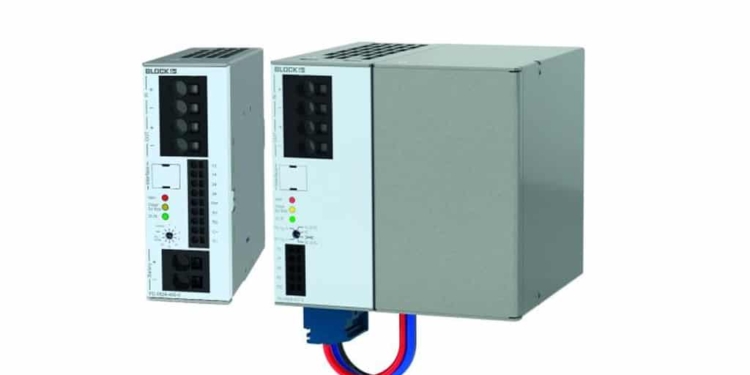source: ECN news
Mon, 04/23/2018 by BLOCK. BLOCK announces the introduction of two new 24V/40A uninterruptible power supplies. These DC input UPS ensure reliable availability of safety-critical systems in the case of power failure. BLOCK UPS supports 12V, 24V and 48V systems and can be either battery-powered or use capacitive energy storage.
Product selection will depend on the application. The battery-powered UPS supports various established battery technologies and provides immediate system back-up in the event of a power failure. Hold-up time may be adjusted to meet end user requirements by adding extra battery packs.
The capacitive energy storage UPS uses state-of-the-art, high efficiency, long life ultracapacitors and provides system power support up to the minute range. Due to the long service life of ultracapacitors and the internal temperature-controlled battery management system, maintenance costs during operation are reduced to a minimum. The capacitive UPS is easy to expand by adding capacitive modules, offers a high power density, is maintenance-free and also offers parameter setting via USB interface and rotary switch.
The extensive communication features of both modules provide integrated monitoring of the entire system in line with the requirements of Industry 4.0.
Parameterization of the both types of UPS possible using BLOCK’s new UPS Control Software either via the front panel mounted rotary switch or via the USB interface. The USB port on both versions is shock and vibration-proofed.
Key features of the battery-powered UPS include support for 24 V and 12 V applications, 5A charging current ensures fast availability, battery start-up without mains power, parameter setting via interface and rotary switch
Dave Wellman, Sales Manager of BLOCK UK, comments; “Our two new UPS products offer modular solutions for the latest industrial control requirements. Convectional battery technology is available for standard requirements while the ultracapacitor version is very useful for remote installations where access for maintenance is difficult.”































